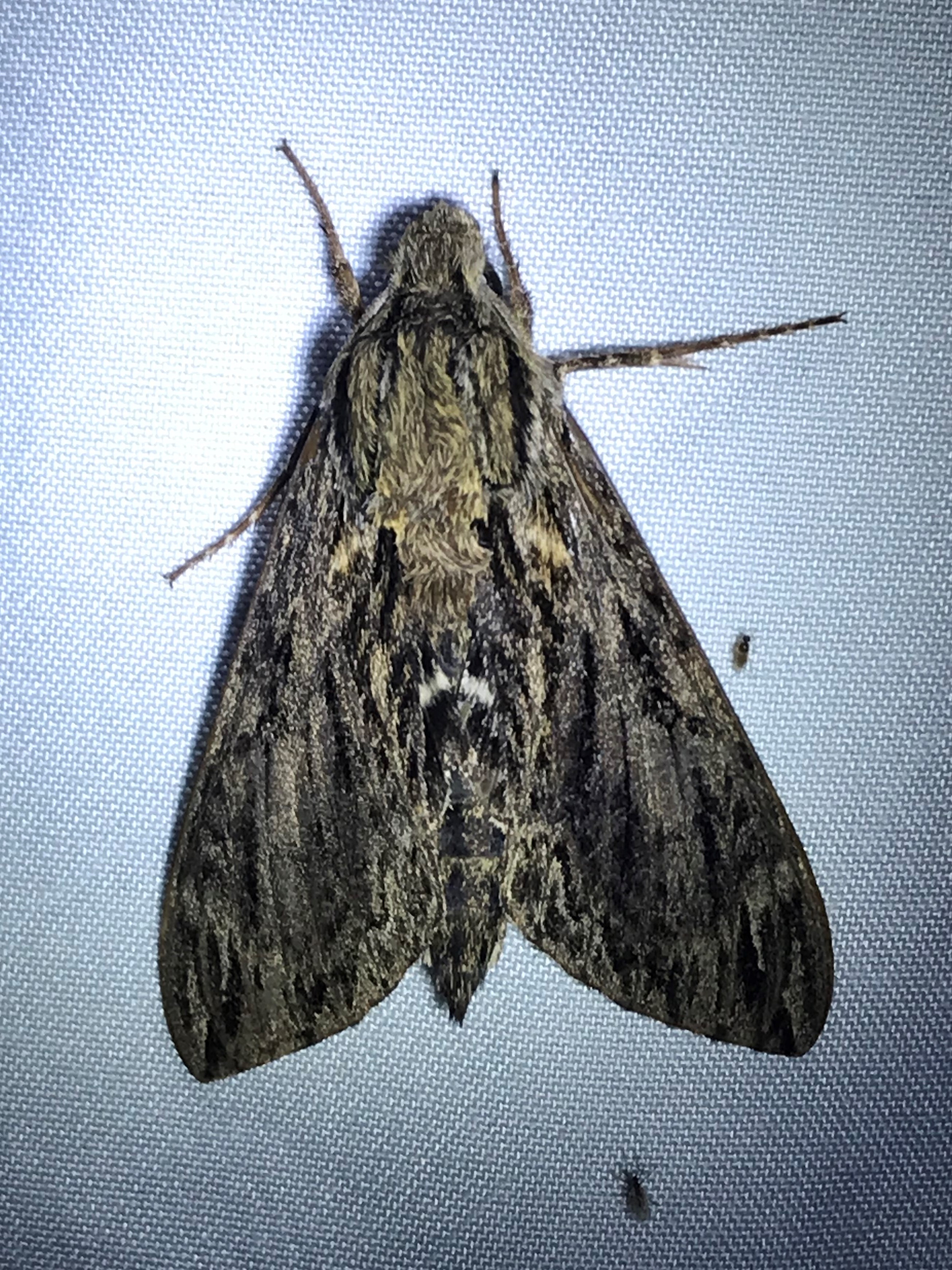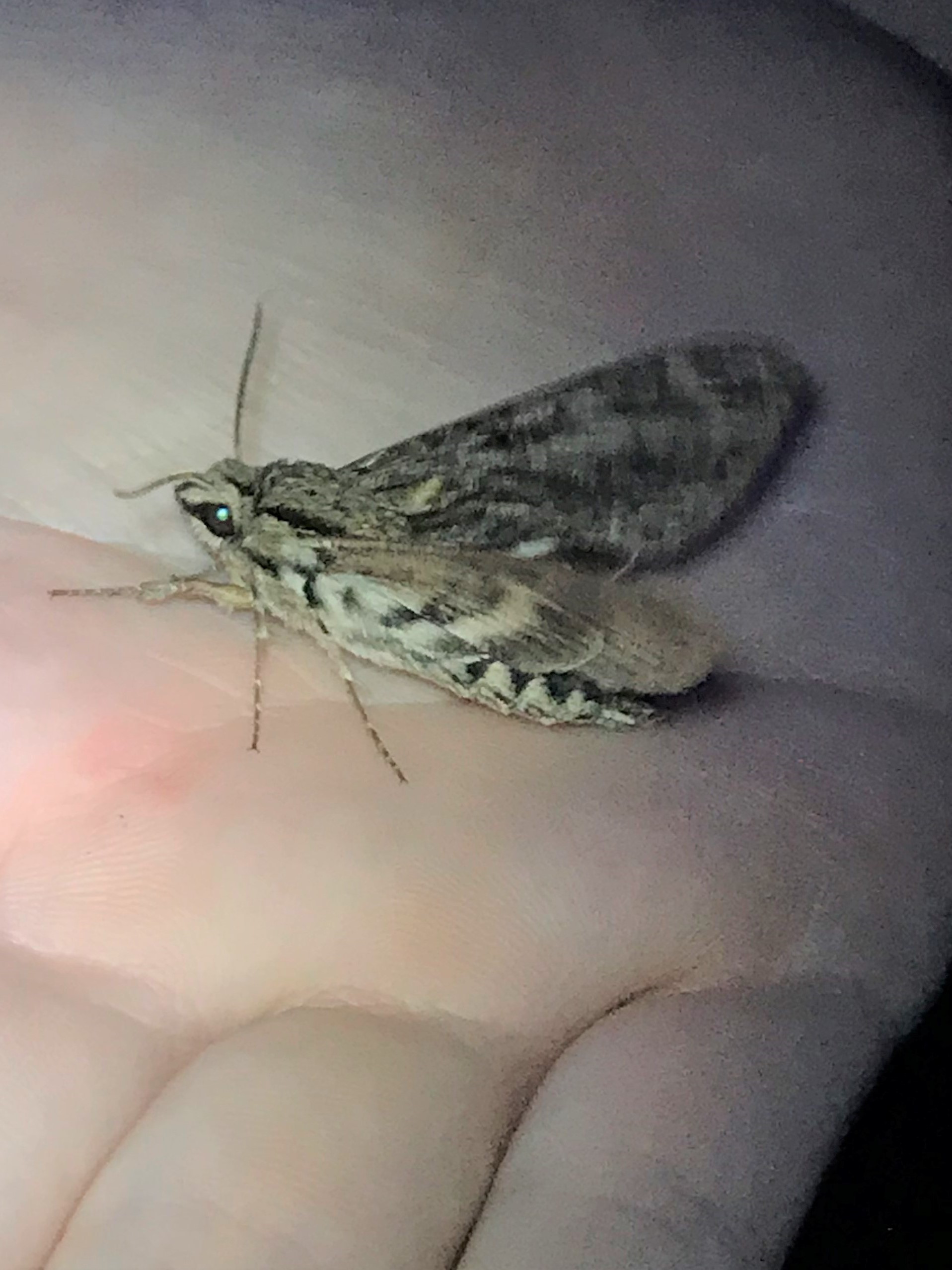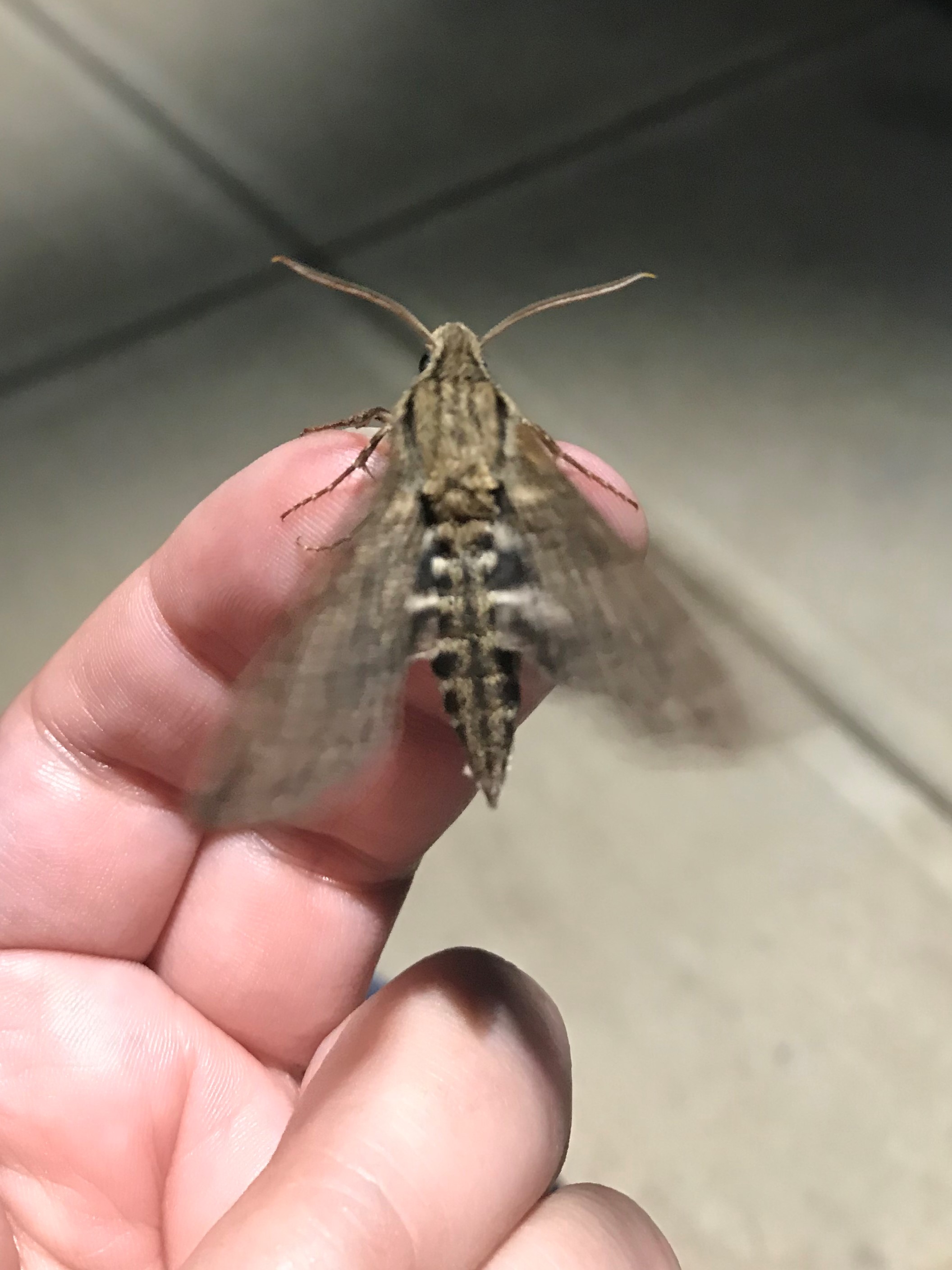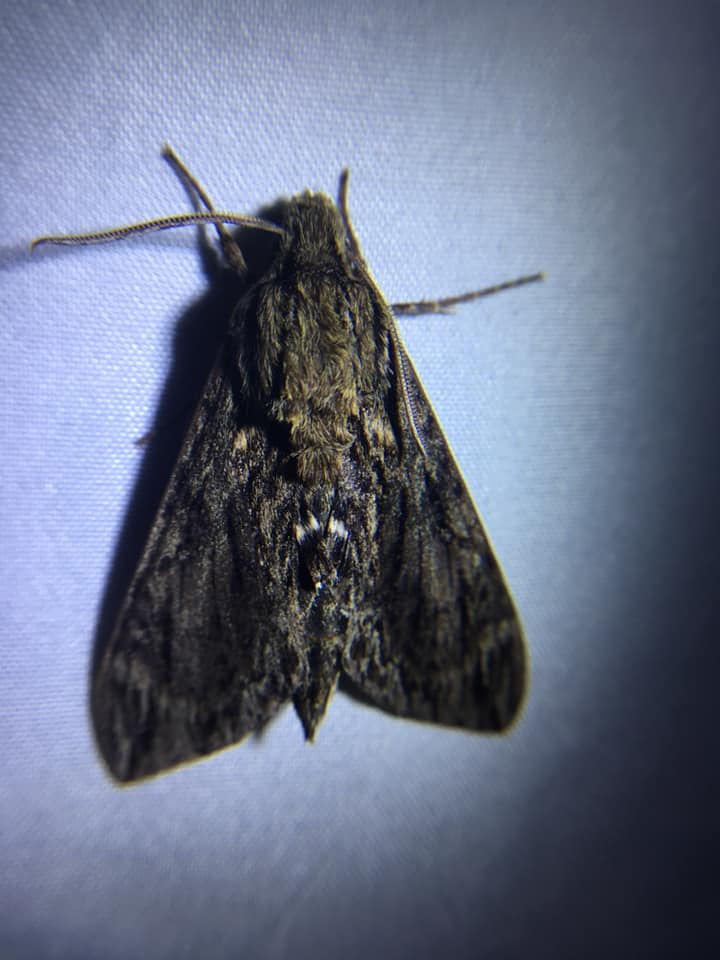ECOLOGY ▪ EDUCATION ▪ ADVOCACY



Sphinx: Named for the resemblance of the caterpillars to an Egyptian Sphinx.
canadensis: The suffix ensis is Latin for “of or belonging to,” which indicates this moth likely was first collected in Canada.
Sfinks can-uh-den-sis



This map shows the confirmed sightings of the Canadian Sphinx in Indiana. All sightings were confirmed through photographic documentation by individuals who contributed to the Great American IN Nature Lepidoptera Project (GAIN LP).
 |
GAIN LP documented in county. |
| Date | County | Observer | Notes | Image1 | Image2 |
|---|---|---|---|---|---|
| 2019-07-27 | Hamilton | Foley, Connor | Adult at Strawtown Koteewi Park |
 |

|
| Observation Details | Images |
|---|---|
| Date: 2019-07-27 County: Hamilton Observer: Foley, Connor Notes: Adult at Strawtown Koteewi Park |

 |
Reasons: “As of 2014 still a fairly widespread species and not rare overall--yet. However, as with all of the ash-feeding Sphingidae this rank does not account for possible impacts of the Emerald Ash Borer which is severely impacting ashes in some parts of the range (e.g. Michigan). Unless that pest is controlled this will be among the several Sphingidae that will be drastically reduced and may be at risk of extinction during this century. Notably it is one of the few that has never been credibly documented from any other foodplants such as privets, its range barely overlaps that of Chionanthus, and based on its habitat specificity it probably does not use any genera other than Fraxinus.”
The Canadian Sphinx caterpillars primary host are ash tree (Fraxinus spp.), specifically black ash (Fraxinus nigra). They have also been documented feeding on blueberries (Vaccinium spp.).
| Known Larval Food Sources in Indiana | ||
| Family | Taxonomic Name | Common Name |
|---|---|---|
| Order: Ericales | ||
| Ericaceae | Vaccinium spp. | blueberries |
| Order: Lamiales | ||
| Oleaceae | Fraxinus spp. | ashes |